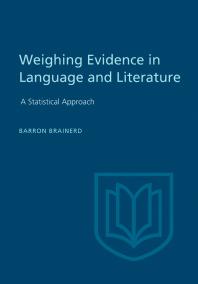

Most ebook files are in PDF format, so you can easily read them using various software such as Foxit Reader or directly on the Google Chrome browser.
Some ebook files are released by publishers in other formats such as .awz, .mobi, .epub, .fb2, etc. You may need to install specific software to read these formats on mobile/PC, such as Calibre.
Please read the tutorial at this link. https://ebooknice.com/page/post?id=faq
We offer FREE conversion to the popular formats you request; however, this may take some time. Therefore, right after payment, please email us, and we will try to provide the service as quickly as possible.
For some exceptional file formats or broken links (if any), please refrain from opening any disputes. Instead, email us first, and we will try to assist within a maximum of 6 hours.
EbookNice Team

Status:
Available4.6
8 reviews
ISBN 10: 1442632399
ISBN 13: 9781442632394
Author: Barron Brainerd
In recent years, there has been a tremendous development in the area of quantitative and statistical analysis of linguistic and literary data, generated, no doubt, by extensive advances in computer technology and their relatively easy availability to scholars. However, except for a few rather specialized examples, there has been no truly introductory text in statistics and quantitative analysis devoted to the needs of language scholars. This work was written especially to fill the gap. It introduces a mathematically naïve reader to those statistical tools which are applicable in modern quantitative text and language analysis, and does this in terms of simple examples dealing exclusively with language and literature. Exercises are included throughout.
1 Reduction of Numerical Data
1.1 Measurements and the arithmetic mean
1.2 Summation notation
1.3 Measures of dispersion
1.4 Curve fitting
1.5 The histogram
1.6 Sample moments
2 Introduction To Probability
2.1 Probability and relative frequency
2.2 Probability spaces
2.3 Independence and conditional probability
2.4 Urn models
3 Random Variables
3.1 Random variables and the definite integral
3.1.1 The notion of random variable
3.1.2 The definite integral
3.1.3 The distribution of a random variable
3.1.4 The normal distribution
3.2 The moments of a distribution
3.2.1 The mean and variance
3.2.2 Higher moments
3.3 Some special distributions
3.4 Joint distributions and the standard error of proportion
3.4.1 Joint distributions
3.4.2 Standard error of proportion
3.5 Some limit theorems
4 Estimation
4.1 Sampling and estimation
4.2 The method of moments
4.3 Maximum likelihood estimates
5 Hypothesis Testing
5.1 Introduction
5.2 Some goodness-of-fit tests
5.2.1 The χ2-test for goodness-of-fit
5.2.2 The χ2-test for homogeneity
5.2.3 The Kolmogorov test for goodness-of-fit
5.3 Tests for independence
5.3.1 A χ2-test for independence
5.3.2 2 × 2 contingency tables
5.4 Comparison of means of normal variates
5.4.1 The t-test of a single mean
5.4.2 The t-test of the difference of the means of two independent samples
5.4.3 Comparison of two sample variances
5.4.4 An F-test for the equality of three or more means
5.4.5 The Scheffé test for multiple comparisons
5.5 Some more distribution-free tests
5.5.1 A runs-test for randomness
5.2.2 The Wilcoxon and related tests sensitive to unequal location
6 Some More Extended Studies
6.1 A study of article use
6.2 A consideration of pronouns versus articles
6.3 On the distribution of syllables per word in English texts
6.3.1 The distribution of syllables per word
6.3.2 Homogeneity within works and authors
6.3.3 A comparison of sampling methods
6.3.4 Syllable counts for nouns
6.4 Some lexicostatistical models for testing affinities between languages of unknown origin
6.4.1 Taking the phonologies of the languages into account
6.4.2 Taking diagram regularities into account
6.4.3 Taking phoneme relative frequencies into account
6.5 Further reading
evidence-based writing pdf
weight of evidence law
weight-of-evidence approach
evidence weight
weight of evidence explained
weight of evidence definition
weigh the evidence example
Tags: Barron Brainerd, Weighting, Evidence